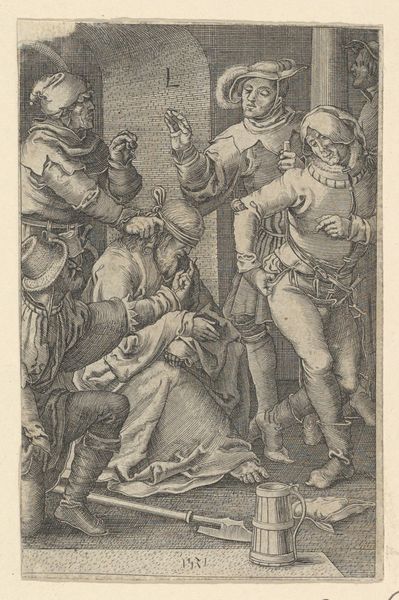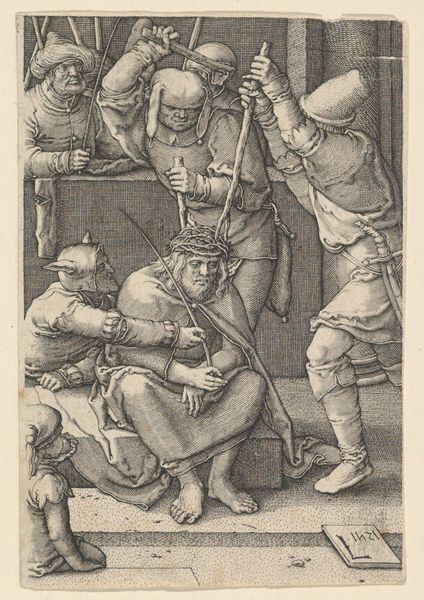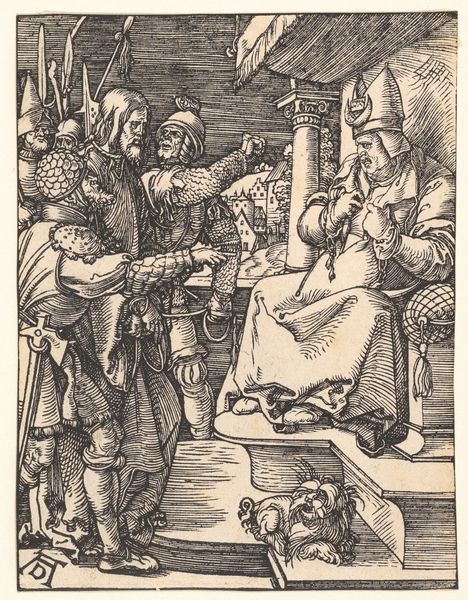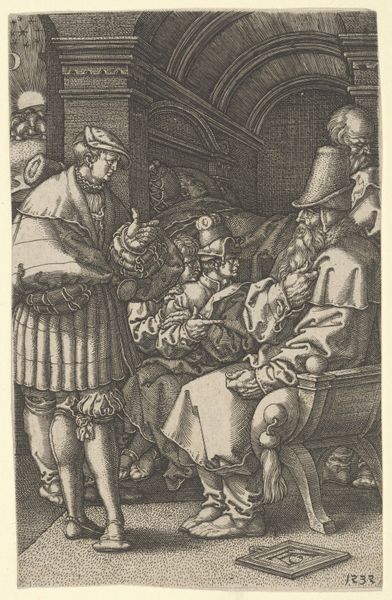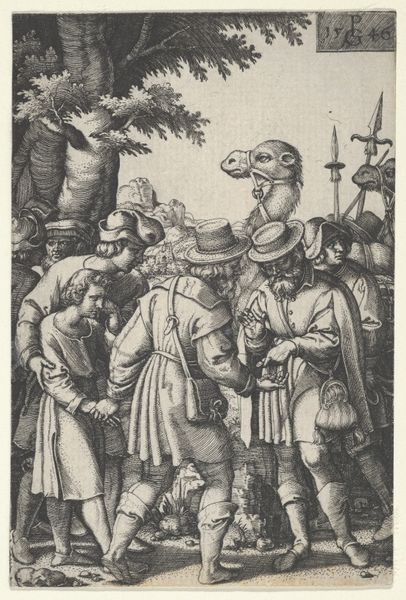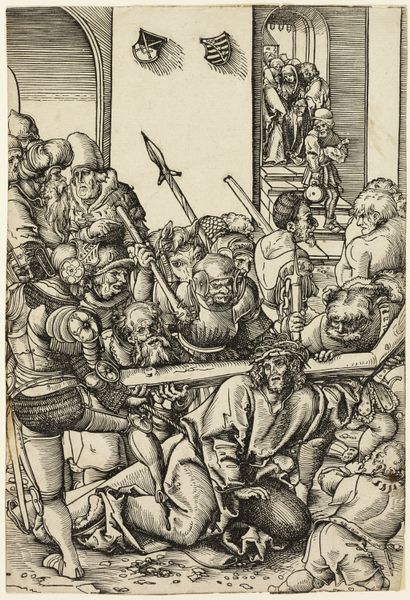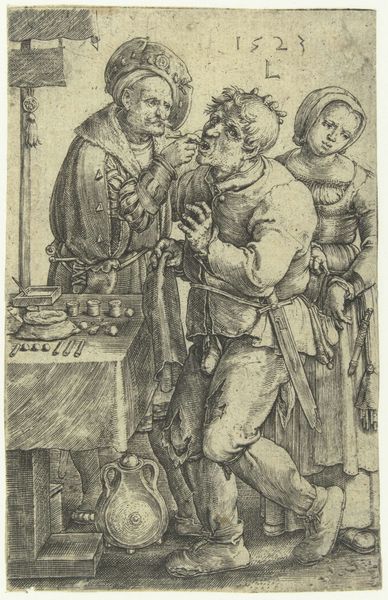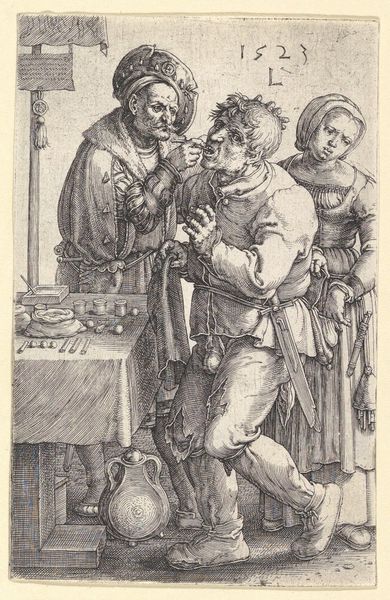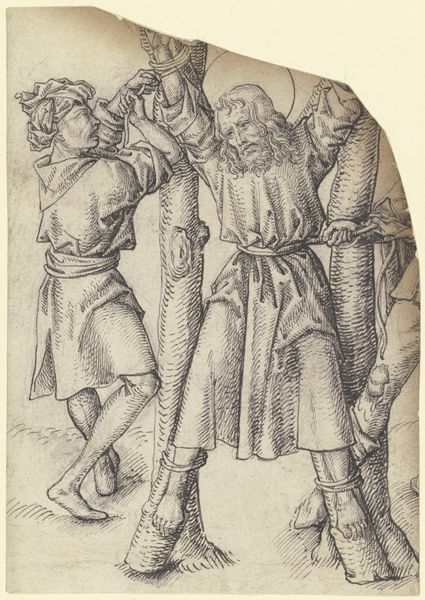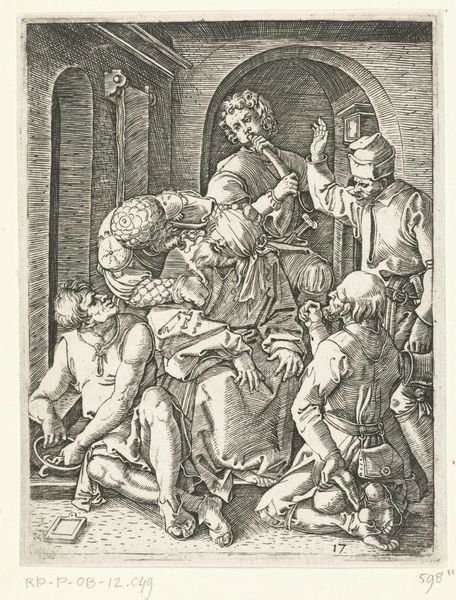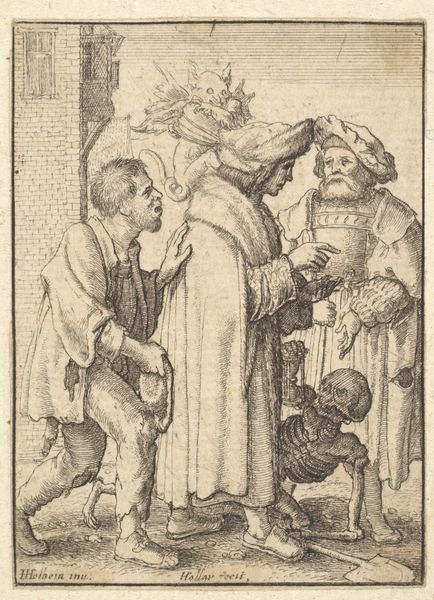
print, engraving
#
medieval
# print
#
figuration
#
line
#
genre-painting
#
engraving
Dimensions: height 157 mm, width 130 mm
Copyright: Rijks Museum: Open Domain
Curator: Look at the stark clarity of the lines! We're looking at an engraving titled "Keisnijder," dating back to 1828, currently held in the Rijksmuseum collection and created by William Young Ottley. Editor: It's intensely grim. Like a medieval dentist's office with really bad lighting and even worse bedside manner. All these swirling, frantic lines just emphasize the palpable agony. Curator: Absolutely. We see what appears to be a lithotomy, a procedure where stones were cut out, presumably from the bladder. The act itself is gendered with many assumptions. The men's smug or distressed facial expressions amplify the anxiety, while the patient is being violated both medically and socially. Editor: Violated is right. He looks like he is reliving the invasion from some past atrocity. Like all the torturous medical interventions, forced gender roles, class inequities are happening all at once in his body. Look at those stones on the table; he's paying for this torment! I guess we still are... Curator: And that economic aspect certainly can’t be ignored. These types of 'genre-paintings,' as we often term them, were commenting on everyday life and often functioned as moral or social critiques. Class difference, the accessibility of medical care, and the theatre surrounding male authority all take centre stage here. Editor: The so-called theatre has spilled onto a stage of capitalist inequity that many women face today. I see that in the unflinching depiction of such visceral pain. A visual essay really that explores not just physical torment, but systemic power imbalance. Curator: Agreed. This image then serves not only as a depiction of a bygone medical practice but as a haunting visual statement on control and access, revealing so many other social issues of the time. Editor: You know, sometimes the most painful art reflects a reality that hasn't quite healed. Keeps us squirming in our seats for all the right reasons.
Comments
No comments
Be the first to comment and join the conversation on the ultimate creative platform.
